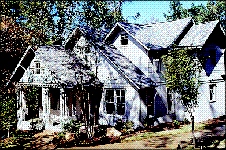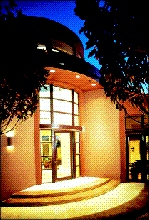Concrete...The Natural Building Material
Today more than ever, we must choose our building materials wisely, balancing the expenditure of natural resources with the benefits of a material over its useful life. Concrete draws upon some of the earth's most common and abundant minerals for its raw materials. The amount of land used to extract the materials needed to make concrete is only a fraction of that used to cut down our forests for lumber.

Building concrete homes helps save our precious forests. Concrete homes are more energy efficient than wood-frame
homes and therefore require less energy to heat and cool. This reduces emissions produced by power generation plants.
Concrete Uses Recycled Materials
Portland cement, which makes up about 10 percent of concrete, is manufactured from limestone, clay and sand. Scrap tires and other combustible waste that would otherwise take valuable land in landfills are often used as a fuel source in the cement manufacturing process. Sources of aggregates are diverse and plentiful: sand, gravel, crushed stone, and an ever-increasing array of consumer and industrial waste products - fly ash from coal burning electric power plants and blast furnace slag from steel mills. Crushed concrete from demolition is often used as aggregate for concrete. Concrete's nearly inert matrix of materials makes it an ideal recycling medium, with absolutely no degradation of strength or performance.
Limitless Possibilities
Concrete can create any shape or size home you can imagine. Because concrete takes any shape or form, it can create an unlimited variety of curves and angles. Concrete's strength can be used to create large open spaces - offering total flexibility in designing your home's floor plan.
Healthy Living
Concrete promotes a healthier indoor atmosphere, since it is practically inert, and requires no volatile organic-based preservatives like wood does. It's naturally waterproof and fire-resistant, so it doesn't need special coatings or sealers. Concrete can also be easily cleaned with organic, non-toxic substances.
Built To Last
Since wood rots and decays, and is an extremely susceptible to natural disaster, it is central to a wasteful construction cycle of frequent disposal and replacement. Concrete, on the other hand, requires little or no maintenance, stands up to hurricanes, tornadoes, earthquakes, and fires. It can't be eaten by termites and won't rust or rot. Concrete's sheer durability over decades of use goes a long way towards waste reduction.
Concrete homes promote a healthier and safer environment.
That's The Beauty of Today's Concrete
There's more than one way to build your concrete home - insulating concrete forms, concrete masonry, aerated concrete, tilt-up concrete, or precast concrete to name a few. With volatile wood prices, logging's high environmental price tag, and a growing shortage of high quality lumber, concrete offers a variety of products and construction techniques to provide cost effective, quality alternatives to wood-frame home construction.
All of these systems share the same basic virtues of concrete - beauty, strength, durability, low maintenance, energy efficiency, interior environmental quality, environmental friendliness, and peace and quiet. Which concrete building technique is right for you depends on the labor force and predominant building practices in your area. Whatever your choice, you can rest assured that your beautiful concrete home is built to last.